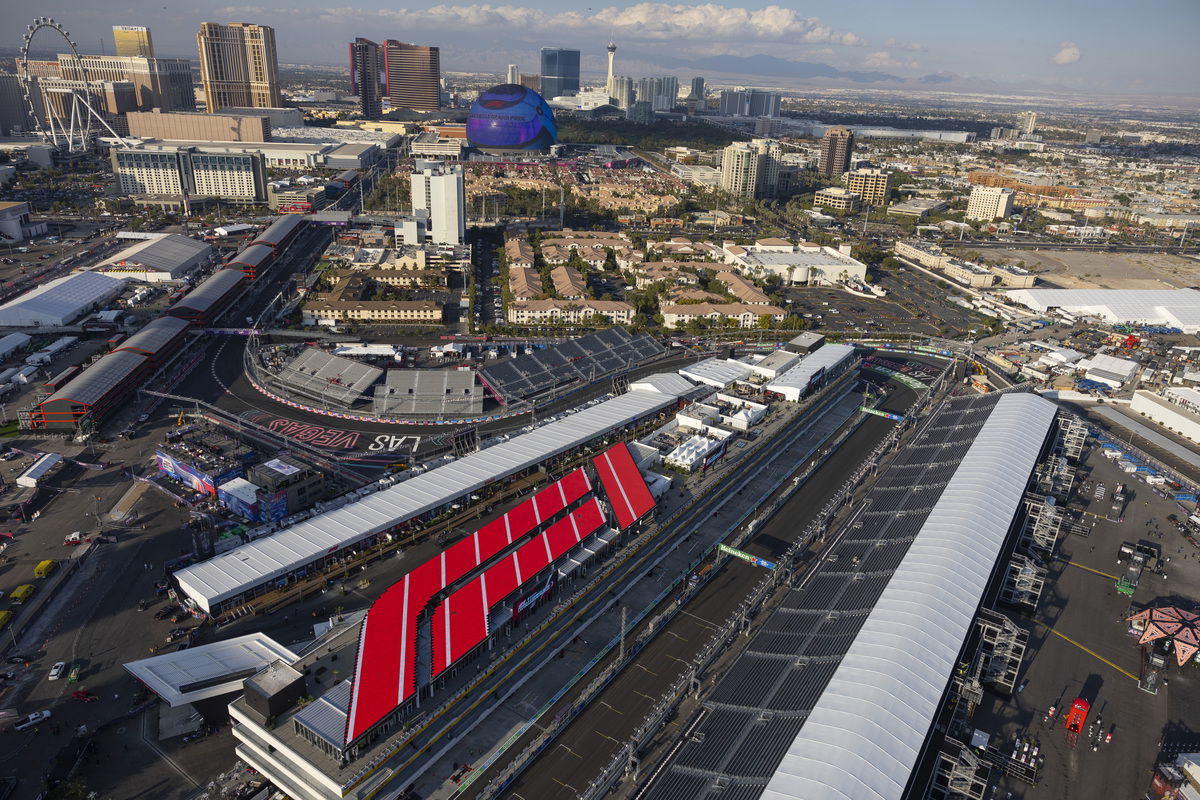

The surge in F1’s popularity has seen demand for events soar, but expanding the championship beyond the 24 races on this year’s calendar is not practical.
Under the Concorde Agreement, it’s believed the commercial rights holder could schedule 25 events, but the consensus is the current 24-event calendar is onerous enough on those involved.
And so, 24 is considered the maximum number of races per season despite there being interest from new promoters keen to host new events.
It’s a good problem to have in many respects, as demand outstripping supply means Formula 1 Management can command a higher asking price for a slot on the schedule.
That creates a balancing act of sorts for Liberty Media, which on the one hand wants to maximise profits but on the other hand is looking to ensure stability of the business.
It’s why around half the events have long-term contracts in place, with 10 of those enjoying deals that stretch into the next decade, essentially locking in over $300 million worth of income from event promoters.
It’s estimated the 2024 season will see Liberty Media bank over $700 million in promotion fees. That will rise as new venues such as Madrid, thought to be paying double what Barcelona was for the Spanish GP, come online in coming years.
The problem the commercial rights holder now faces is how to grow that figure, given half the championship is locked into longer-term deals and that adding events is, essentially, impossible.
The solution floated by Stefano Domenicali, CEO of Formula 1, is to have rotating events, where a set number of venues remain a constant feature where others take turns to host a grand prix.
That addresses the demand issue without affecting supply in any meaningful way but with the potential to add tens of millions more to Formula 1 Management’s bottom line.
It creates opportunities for venues that otherwise might not be able to commit to a long-term contract or afford F1’s hosting fees annually; the Belgian and Emilia Romagna Grands Prix are thought to be prime examples, with organisers in Zandvoort keen on having their event part of a rotation.
It’s an approach that makes sense for the Dutch GP at a venue that is already up to F1 standard in terms of the venue and facilities necessary to accommodate large numbers of fans.
The investment it would need to make annually to prepare for F1 would be comparatively minimal.
But how does a rotating schedule stack up, financially, for new venues or those that need work to bring them up to F1 standard?
Every new event incurs costs, which are typically amortised over the period of the promotion contract. Investment in upgrades is calculated similarly; it would be foolish to invest $1 million in a new grandstand in the final year of a contract when doing so will only net another $200,000.
It’s that calculation that is more difficult for events part of any rotation as the period needed to amortise costs increases proportionally.
Unless the promoter is happy to simply write off the cost of the event, and in fairness there are some that are, contract duration is critical when it comes to the viability of any of the rotating events.
That’s especially the case for street circuits, which have higher initial costs (barriers, resurfacing, grandstands, etc) and far higher annual costs when it comes to track build.
One should also keep in mind the muscle memory element of a track build, and the impact a year or two off has on a temporary structure’s construction/deconstruction at less regular intervals – no matter how well the process may be documented.
On top of that, one could realistically expect promotion fees to be around $50 million, which is thought to be around the going rate for current events in China, Azerbaijan, the United States, Singapore, Qatar, Britain, and Bahrain.
There are other costs to consider too, such as marketing and ticket sales – will alternating events drive strong ticket sales or curate ambivalence among fans? From a government’s perspective, what is the impact on tourism and the economy?
They’re issues that need to be factored in by any promoter when considering the asking price of an event.
Of course, rotating races makes sense from the commercial rights holder’s perspective: turn the Emilia Romagna Grand Prix into a biennual event and cash in $40 million every other year rather than the $20-odd million it currently brings in annually, and pair it with another event – potentially Monaco.
Do the same with Zandvoort (which is thought to pay about $30 million annually) and Belgium and suddenly two spots have freed up on the calendar, which could go to new events event like Thailand, perhaps worth $60 million annually for a decade.
Suddenly the inability to add events to the calendar is circumvented and two lower-paying events, worth a combined $50 million annually, can actually bring in $100 million.
Repeat that two or three times – more than that diminishes the exclusivity value of a slot on calendar – and it’s not implausible for the practice to generate well over $100 million a year.
However, that hinges on the finances stacking up on the promotor’s side of the equation. Those in Zandvoort think the maths works.
The other element is that by proposing event rotation it applies pressure to promoters ahead of inking a renewal – and there are more than half a dozen of those.
By stimulating the demand element it might instil a fear of missing out, and rake in higher fees as a result.






















Discussion about this post